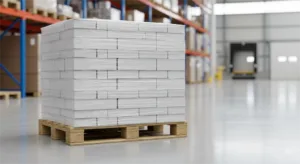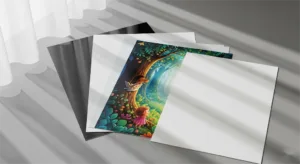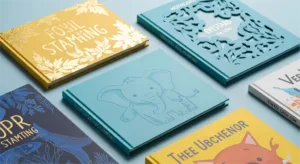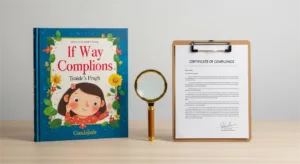Ever wondered why new books are often wrapped in plastic? It’s called shrink wrap, and it might be more important than you think! This guide dives deep into the reasons for shrink wrapping books, explores eco-friendly alternatives, and even shows you how to DIY like a pro.
Shrink wrap protects books from damage, boosts their visual appeal, and deters theft. It’s often essential for valuable editions, books with delicate finishes, or those traveling long distances. However, eco-conscious alternatives like paper wrapping or biodegradable films are gaining popularity.
Shrink wrap is a powerful tool for protecting and presenting your books, but it’s not always necessary. Learn when to use it, when to skip it, and how to make the best choice for your needs!
Understanding Shrink Wrap for Books

Okay, before we get into the nitty-gritty, let’s make sure we’re all on the same page. What exactly is shrink wrap?
Simply put, shrink wrap is a type of plastic film that shrinks tightly around an object when heat is applied. You’ve probably seen it used for all sorts of things, from bundling CDs to wrapping those giant pallets of goods you see in warehouses. When it comes to books, shrink wrap is that clear, protective layer you often find on new books, especially hardcovers.
But why do publishers go to the trouble of shrink wrapping their books in the first place? Well, it turns out there are quite a few reasons!
Why Shrink Wrap Books?
For Publishers and Printers:
- Protection is Key: Think about all the bumps and scrapes a book might endure on its journey from the printing press to your bookshelf. Shrink wrap acts like a superhero cape, shielding those precious pages from dust, moisture, and those dreaded corner dings.As Joe DeCosmo, Director of Business Development at Bookmasters, puts it, “the use of shrink wrap is a critical step in the distribution process to ensure that books reach the consumer in the same pristine condition they left the printer.” Remember that statistic from our book printing cost article? Damaged books often can’t be sold, and that eats into profits.
- Presentation Matters: Let’s be honest, we all judge a book by its cover (at least a little!), which is why the importance of book cover design cannot be overstated in the publishing world. Shrink wrap adds a touch of polish and professionalism, making a book look brand new and enticing. It’s like giving your book a little gift wrap before it heads out into the world.
- Efficiency is King: In the fast-paced world of publishing, time is money. Shrink wrapping can be automated, which speeds up the packaging process and helps get those books out the door faster. Plus, as we discussed in our piece on offset vs digital printing, every step in the process adds to the cost, so efficiency is essential.
- Tamper-Proofing: Shrink wrap also acts as a security measure, deterring theft and preventing anyone from tampering with the book before it reaches the customer. No one wants to buy a book that’s already been read, right?
For Self-Published Authors:
- Looking the Part: If you’re self-publishing, you want your book to look as professional as possible. Shrink wrap can give your book that extra edge, making it look like it came straight from a big publishing house. It’s all about first impressions, after all!
- Protecting Your Precious Work: If you’ve poured your heart and soul into writing a book, you want to keep it safe from harm. Shrink wrap is a great way to protect those limited-edition copies or special editions that you’ve worked so hard on.
- Ready to Ship: Shrink wrap makes it easy to store and ship your books. Whether you’re selling online or at book fairs, shrink wrap keeps your books looking pristine and ready for their new homes.
Types of Shrink Wrap for Books
Table Title: Shrink Wrap Types and Characteristics
| Attribute | PVC (Polyvinyl Chloride) | PE (Polyethylene) | POF (Polyolefin) |
|---|---|---|---|
| Material Properties | Cheapest option Not easily recyclable |
More durable than PVC Often recyclable |
Most eco-friendly option Recyclable and often made from recycled materials |
| Protection | Moderate protection Susceptible to tearing |
High protection Resistant to tears and punctures |
High protection Resistant to damage |
| Visual Appeal | Clear finish Standard appearance |
Clear finish Can be customized |
Clear finish Can be customized with prints |
| Cost | Very low Most affordable option |
Moderate Balances cost and eco-friendliness |
Moderate to high Premium eco-friendly option |
| Eco-Friendliness | Not eco-friendly Contributes to plastic waste |
More eco-friendly than PVC Recyclable |
Eco-friendly Made from recycled materials |
| Food Safety | Not food-safe | Not food-safe | Food-safe |
| Suitability for Books | Best for low-cost needs Not recommended for high-value books |
Good for books needing moderate protection and eco-concerns | Ideal for high-value books and eco-conscious consumers |
Now, not all shrink wrap is created equal. There are a few different types commonly used for books:
- PVC: This is the most common type of shrink wrap, and it’s usually the most affordable. However, it’s not the most eco-friendly option, as it’s not easily recyclable.
While PVC remains a popular choice due to its cost-effectiveness, I predict we’ll see a significant shift towards more sustainable options like Polyethylene (PE) and Polyolefin (POF) in the coming years, as consumers demand greener packaging solutions. Consumers are increasingly demanding eco-friendly practices, and publishers are responding by seeking out packaging solutions that align with those values.
- PE: Polyethylene shrink wrap is more durable than PVC and is often recyclable. It’s a good choice if you’re looking for a balance of cost and environmental impact.
- POF: Polyolefin shrink wrap is a rising star in the packaging world. It’s considered the most eco-friendly option, as it’s recyclable and often made from recycled materials. It’s also food-safe, which might not be a big deal for books, but hey, it’s good to know!
So, which type of shrink wrap is right for you? That depends on your priorities and budget. If cost is your main concern, PVC might be the way to go. But if you’re looking for a more sustainable option, PE or POF are better choices.
Debating the Necessity: To Shrink Wrap or Not?
Alright, let’s tackle the elephant in the room (or should we say, the book on the shelf?). Does every book need to be shrink wrapped? The truth is, it depends.
When Shrink Wrap is Essential
There are definitely some cases where shrink wrap is a must-have:
- High-Value Books: If you’re dealing with first editions, collector’s items, or books with special features (like those with intricate covers or those fancy fold-out pages), shrink wrap is your best friend. It adds an extra layer of protection and helps preserve their value. Imagine someone buying a rare, signed copy of their favorite book only to find it dog-eared and coffee-stained!
This is especially important for those high-value books, as David Burton, President of the Independent Book Publishers Association, points out: “Shrink wrapping is not just about protecting the book; it’s also about maintaining the integrity of the book as a product. It sends a message to the consumer that this is a new, untouched item…”
- Delicate Darlings: Books with delicate finishes, like those with dust jackets or unique cover treatments, benefit greatly from shrink wrap. It prevents scratches, scuffs, and those annoying little tears that can happen during shipping or handling.
- Long-Distance Travelers: If your books are going on a long journey, whether it’s across the country or overseas, shrink wrap is a must. It helps keep them safe from the bumps and bruises of travel. Think of it as a travel insurance policy for your books!
- Bulk Orders: When you’re shipping books in bulk, shrink wrap helps keep everything organized and prevents individual books from getting damaged. Plus, it makes it easier to handle those heavy boxes.
When Shrink Wrap Might Be Optional
On the other hand, there are situations where shrink wrap might not be necessary:
- Everyday Paperbacks: If you’re printing a simple paperback with a standard cover, shrink wrap might be overkill. Especially if it’s being sold locally and won’t be subjected to a lot of handling.
- Short Print Runs: For digitally printed books with small print runs, especially those printed on demand, shrink wrap might not be cost-effective.
Addressing Concerns About Shrink Wrap
Now, we can’t talk about shrink wrap without acknowledging some of the concerns surrounding it.
Environmental Impact
One of the biggest criticisms of shrink wrap is its environmental impact. Traditional PVC shrink wrap isn’t easily recyclable and can contribute to plastic waste. But don’t worry, there’s good news! As we mentioned earlier, there are more eco-friendly options available, like PE and POF. These materials are recyclable and often made from recycled content, so you can feel good about using them.
Potential Damage to Books

Believe it or not, shrink wrap can actually damage books if it’s not applied correctly. The heat used to shrink the film can warp the covers or pages, especially if the book is thin or has a delicate spine. And some types of shrink wrap can release gases that can damage the book over time. But don’t panic! We’ll talk about how to avoid these issues later on.
So, what if you’re looking for a completely plastic-free option? Let’s explore some alternatives to shrink wrap!
Alternatives to Shrink Wrap

Okay, so maybe you’re not sold on shrink wrap, or maybe you’re looking for something a little more eco-friendly. Good news! There are other ways to package your books.
Exploring Eco-Friendly Options
Here are a few alternatives to consider:
- Paper Wrapping: This is a classic option that’s making a comeback. Paper is biodegradable and recyclable, and it can give your book a vintage or artisanal feel.
While paper wrapping offers a charming, eco-friendly alternative, it’s essential to consider its limitations. Paper can be susceptible to tears and moisture damage, making it less suitable for books that will be shipped long distances or stored in humid environments. In these cases, a more robust solution like a cardboard box might be preferable.
Plus, there are so many beautiful paper options available, from kraft paper to colorful patterned designs.
- Cardboard Boxes: Sturdy and reliable, cardboard boxes offer excellent protection for your books. They can be customized with your logo or design, and they’re reusable, which is a big plus for the environment.
- Biodegradable Films: If you still love the look and feel of shrink wrap, but want a greener option, look for biodegradable films made from plant-based materials. These films will break down naturally over time, reducing your environmental impact.
Pros and Cons of Alternatives
Of course, each packaging option has its own set of pros and cons. Here’s a quick rundown:
| Option | Pros | Cons |
| Paper Wrapping | Eco-friendly, aesthetically pleasing, adds a unique touch |
Can be less durable than shrink wrap, may not be water-resistant
|
| Cardboard Boxes | Sturdy, reusable, customizable |
Can be bulky and more expensive to ship
|
| Biodegradable Film | Eco-friendly, similar look and feel to shrink wrap |
Can be more expensive than traditional shrink wrap
|
Ultimately, the best alternative for you will depend on your specific needs and priorities. Consider factors like cost, protection, aesthetics, and environmental impact when making your decision.
Now, let’s get practical! If you’ve decided that shrink wrap is the way to go, we’ll walk you through how to do it yourself.
Shrink Wrapping Books: A Practical Guide
Alright, let’s get our hands dirty (not literally, of course!). If you’ve decided shrink wrap is the way to go, here’s how to do it yourself.
DIY Shrink Wrapping at Home
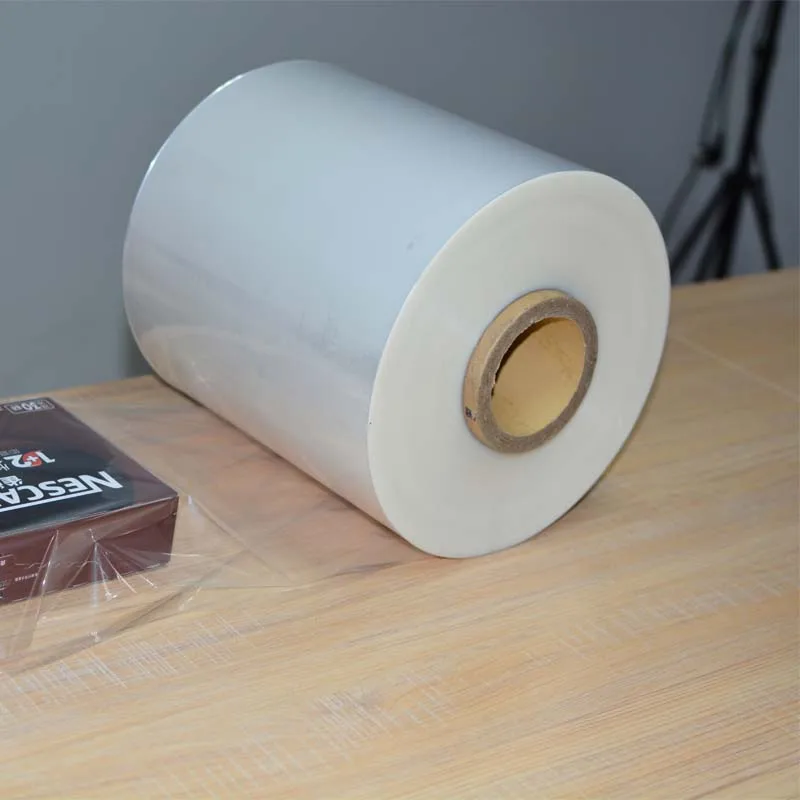
What You’ll Need:
- Shrink wrap film (choose the right type for your needs)
- Heat gun or shrink wrap sealer
- Scissors or a utility knife
- Work table or flat surface
Step-by-Step Guide:
- Measure and Cut: Measure your book and cut a piece of shrink wrap that’s slightly larger than the book on all sides. You want enough overlap to create a secure seal.
- Position the Book: Place the book in the center of the shrink wrap film.
- Wrap and Seal: Fold the shrink wrap over the book, making sure the edges overlap. Use your heat gun or sealer to seal the edges together. Start with a low heat setting and gradually increase it until the film shrinks tightly around the book.
- Trim the Excess: Once the film is fully shrunk, use scissors or a utility knife to trim any excess film. Be careful not to cut the book!
- Admire Your Work: Step back and admire your perfectly shrink-wrapped book!
Tips for a Professional Finish:
- Avoid Wrinkles: Keep the film taut as you’re sealing it to avoid wrinkles.
- Don’t Overheat: Be careful not to overheat the film, as this can cause it to melt or damage the book.
- Practice Makes Perfect: It might take a few tries to get the hang of it, so don’t get discouraged if your first attempt isn’t perfect.
Finding Professional Shrink Wrap Services

If DIY isn’t your thing, or you’re dealing with a large number of books, you might want to consider hiring a professional shrink wrap service. Here are a few things to keep in mind:
- Cost: Get quotes from several different services to compare prices.
- Quality: Ask about the types of shrink wrap they use and their experience with books.
- Turnaround Time: How long will it take them to shrink wrap your books?
- Reputation: Check online reviews and ask for references.
Conclusion
So, after all that, does book printing really need shrink wrap? Well, it’s not a simple yes or no answer. As we’ve seen, shrink wrap offers a lot of benefits, from protection and presentation to efficiency and security. But it’s important to weigh those benefits against the potential drawbacks, like environmental impact and the risk of damage to books.
Ultimately, the decision of whether or not to use shrink wrap depends on your specific needs and priorities. If you’re looking for the most eco-friendly option, consider alternatives like paper wrapping or biodegradable films. But if you need a reliable way to protect your books and give them a professional finish, shrink wrap is still a solid choice.
And hey, if you’re feeling adventurous, why not try shrink wrapping your own books at home? It’s a fun and easy way to add a personal touch to your book packaging!



